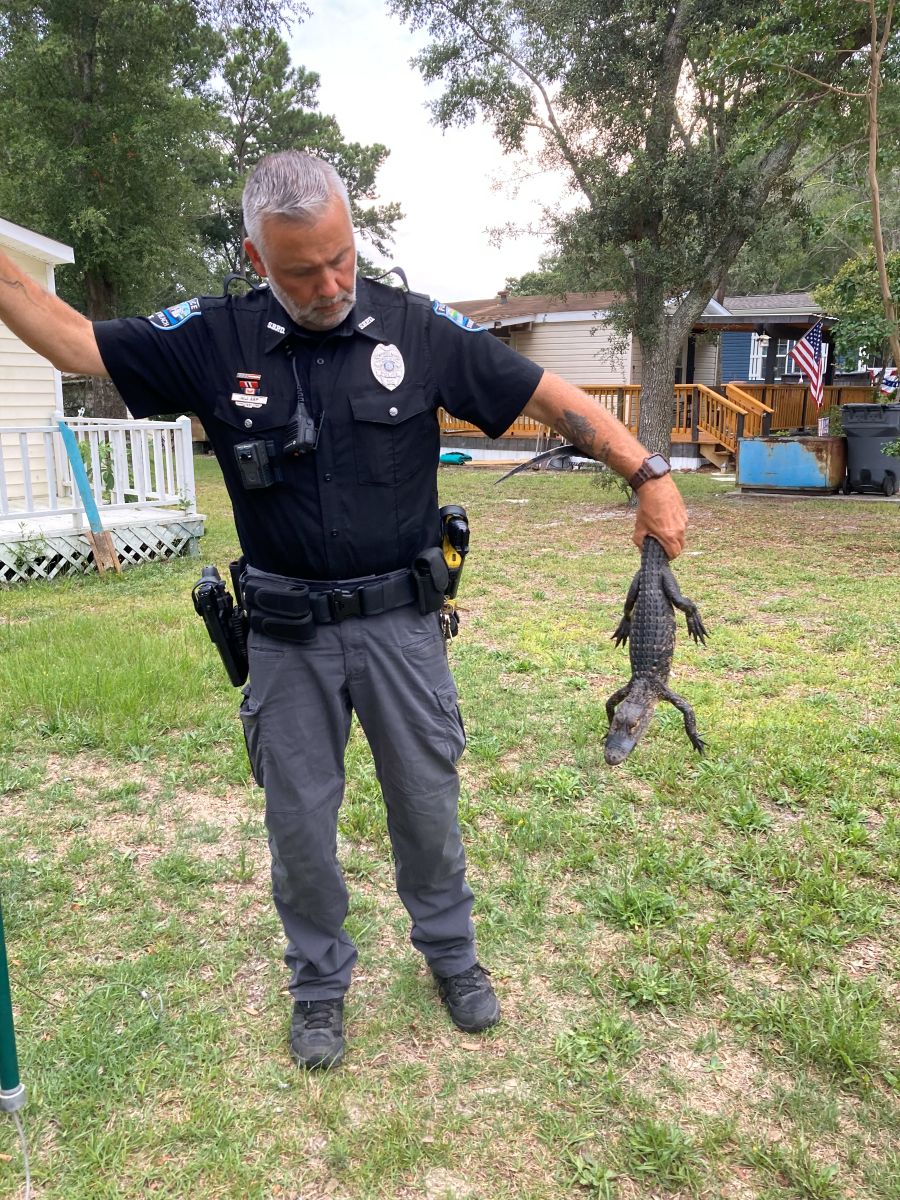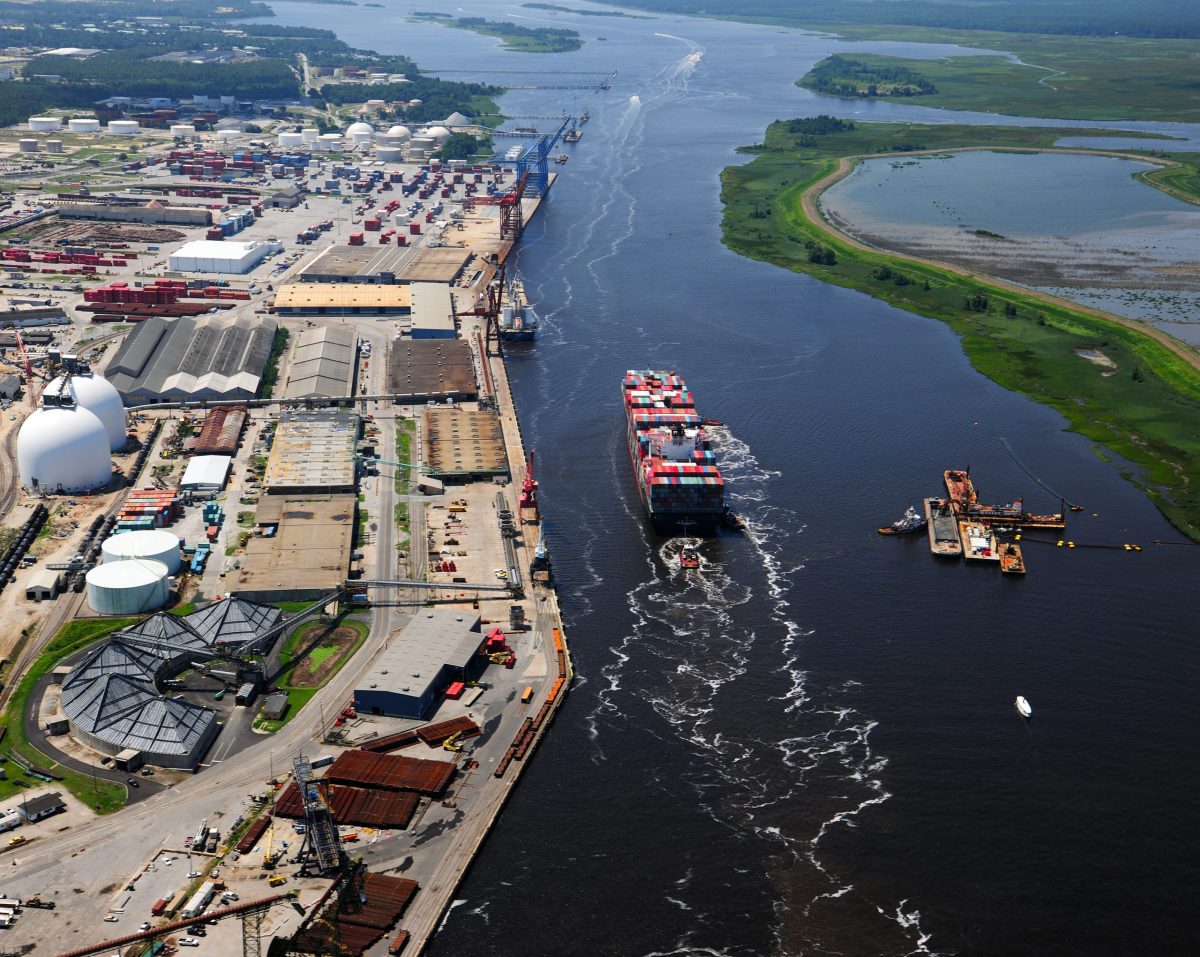
Did you hear the one about the alligator?
An alligator walks into … a road, a pool, a miniature golf course, onto a beach, underneath a car, up to the front door of a storefront, by a back entrance of a police station.
Supporter Spotlight
Stop me if you read about this while perusing the headlines of your local newspaper, heard about it on the 6 o’clock news, or saw it plastered across social media platforms this past summer.
Alligators have made quite the splash (pun intended) in recent months here in southeastern North Carolina, where seemingly numerous public appearances by these living dinosaurs have produced dramatic headlines and videos shared not only across the state, but the country.
But these typically reclusive reptiles aren’t looking for all the attention they’ve been getting, experts say.
They just want to be left alone. Problem is, they’re being squeezed out of seclusion as housing developments and retail centers continue to crop up along the coast.
“The ever-growing population along the coast of North Carolina is the biggest threat to wildlife in general,” said John Harrelson, a wildlife biologist with the North Carolina Wildlife Resources Commission. “Habitat loss is the biggest threat to wildlife in general, not just alligators, and when people move in and we build communities in places that haven’t historically had people, then that leads to lots of interactions.”
Supporter Spotlight
And the more interactions that occur, the more comfortable alligators become around people.
Harrelson puts alligators into one of two categories: country alligators and city alligators.
Country alligators inhabit areas up the Northeast Cape Fear River. Those alligators generally try their best to steer clear of humans, he said.
But city alligators get used to seeing people and, just like squirrels, birds, deer and other animals, they become habituated, “realizing that people, for the most part, don’t mean them any harm and that there’s nothing to be worried about,” Harrelson said.
Think of it like a cost-benefit analysis where an alligator weighs the risk of being around people and decides whether the reward is worth the risk.
“And often times the reward is great enough,” Harrelson said.
While development strips away their natural habitat, it tends to provide pockets of prime real estate for alligators in the form of retention ponds.
Harrelson works in the commission’s District 4, which includes Brunswick County, and is home to a reported 30 scenic golf courses (think about all of the water hazards — well, not a hazard from a gator’s point of view — on just one of those courses).
Brunswick, Columbus, Craven, New Hanover, Onslow and Pender counties are home to the largest populations of American alligators in North Carolina and their turf runs from the state’s coastal plains to Texas.
With its barrier island beaches, proximity to Wilmington and Myrtle Beach, South Carolina, and its numerous golf courses, Brunswick County has become a draw for retirees who, for many, move in from areas where there are no alligators.

Pair that with the influx of tourists who flock to the county each summer – Oak Island’s population more than quintuples between May and August – and odds are high people are going to encounter alligators.
Boiling Spring Lakes Police Capt. Windy Hager knows that when tourism season picks up, so too do the number of calls going in to the Brunswick County town’s law enforcement center about alligator sightings.
“When it’s warmer (alligators) become more active and, when you’ve got people who are not familiar with alligators they get a little excited about, ‘Oh, there’s one in the lake!’ Well, yes, that’s where they live and that’s what we have to tell them a lot of times,” Hager said.
Hager has lived in the area more than 10 years. She’s accustomed to seeing alligators pretty regularly in their own habitat.
But one had to be removed from a swimming pool a couple of weeks ago and the unnamed storm that pummeled Brunswick County with catastrophic rainfall Sept. 16 means there’s a lot of water in places that were previously dry.
“I know that there’s two (alligators) in what used to be somebody’s front yard right now in the city because their front yard is flooded,” Hager said. “But they’re just doing their thing and the people who live there are giving them their space. The people are not messing with them and the alligators aren’t messing with the people so they’re sharing space right now.”
Two days before he spoke in a telephone interview with Coastal Review, Sunset Beach Police Animal Control Officer Bill Arp had removed a small alligator hanging out underneath a car.
“They’ll wind up in people’s garages and on people’s porches, underneath decks, under cars. We find them all over the place,” he said. “Unfortunately, because of such huge development down here, their habitat is starting to shrink and that’s what’s happening. People are calling us and wondering, ‘Why’s it under my car? Why are they on my porch? Why are they in my garage?’ Well, that’s why because the development is robbing them of their other habitat.”
Alligator Do’s and Don’ts
If an alligator settles in an area near you, wildlife and law enforcement officials have tips on how to safely cohabitate.
“A lot of people think, even with birds and deer, it’s nice to feed them,” Arp said. “But alligators, you don’t. Everybody knows an alligator is an apex predator. They’re nice to watch. They’re nice to take pictures of, but to feed them, that’s not a good idea.”
Remember what Harrelson said earlier in the story about city alligators?
“Individual people feeding alligators is the worst thing you can do,” he said. “Alligators are wild animals and they’ve got to work for their food. An easy meal means, ‘hey I don’t have to continue to fail and fail and make all these attempts when I’m not successful. I can just wait for this person to walk over and, if I approach them, they’re going to give me chicken or bread or marshmallows, a fish scrap or whatever else they’ve got.’ We deal with this all the time, particularly with folks who aren’t locals.”

It is illegal to feed alligators. It is also illegal to kill them.
American alligators are protected by the Endangered Species Act as threatened. In North Carolina, a permit is required to hunt alligators. The monthlong season is limited to population control at the request of municipalities in Brunswick, Carteret, Columbus, Craven, Hyde, Jones, New Hanover, Onslow, Pamlico, and Pender counties, according to the WRC website.
“The Commission does not plan to issue permits to take American alligators, outside of municipality requested population reduction hunts, until further research is conducted to determine the conditions under which alligator populations would be sustained while allowing limited harvest,” the site states.
Harrelson said that alligators are relocated only as a last resort because they, like other wildlife, have a propensity to travel long distances to return to where they were captured.
“This is something that we face ongoing and, as biologists, something that we have to figure out how to address going forward because our agency isn’t going to pick up and move animals,” Harrelson said. “We want to let wildlife be wildlife for as long as we can and maintain the ecosystems that are out there.”
As people build, alligators move. Males can occupy areas greater than 2 miles so, when they move, they’re crossing roads, ditches and yards.
An alligator may be removed from a property when it is considered a nuisance – at least 4 feet long and poses a threat to people, pets or property. To report a potential nuisance alligator, call the N.C. Wildlife Helpline at 866-318-2401.
Experts say simply spraying an alligator with a water hose usually prompts the animal to move away.
If you’re taking a walk and spot an alligator in or near your path, give the alligator a wide berth and go around it. Never walk up to one or try to touch one.
“When an alligator is on a sidewalk or up on a roadway, he’s not hunting, he’s not searching out food. If we give them an opportunity to make that move on their own, most of the time, they will,” Harrelson said. “Our biggest thing, of course, is to keep people safe and then let the animals be animals. That’s what we’re always striving toward.”







